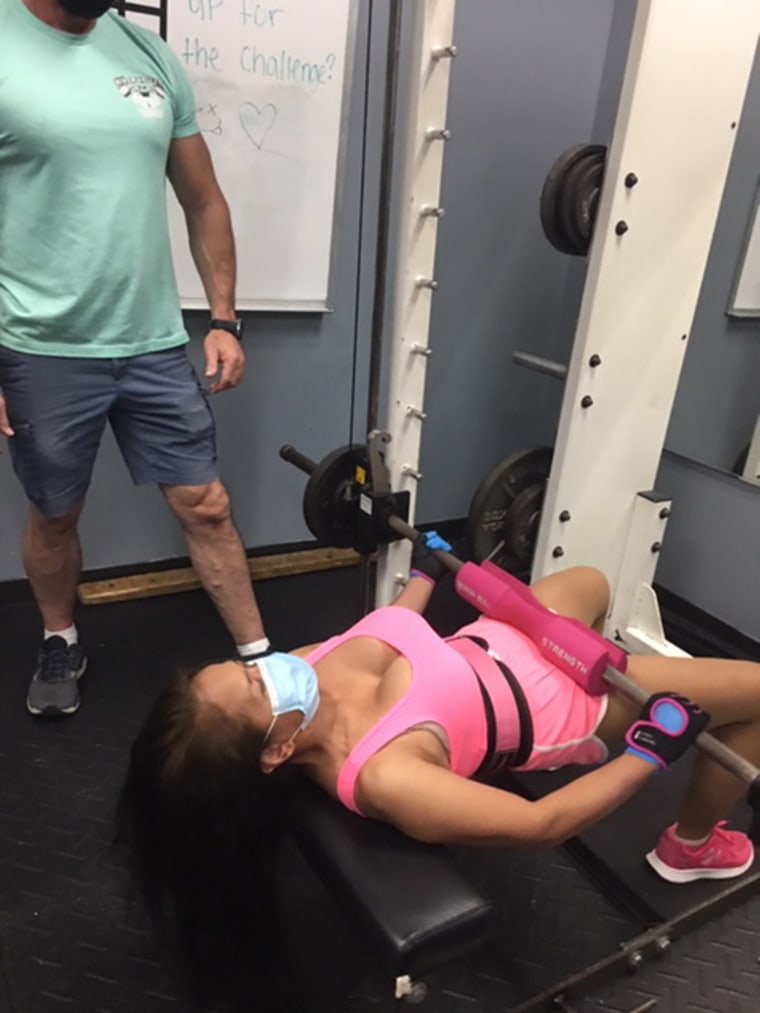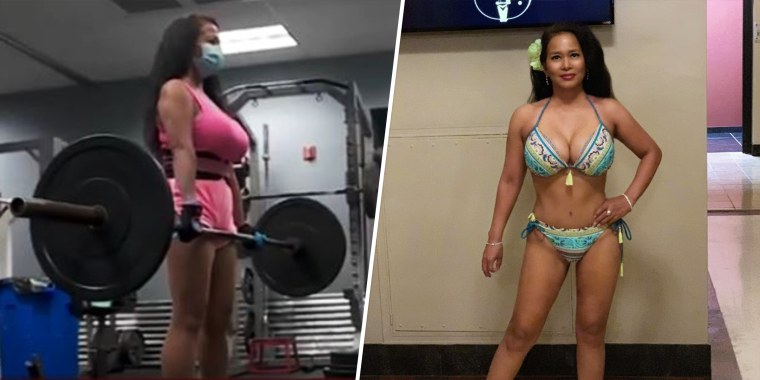Most people head to the gym to lose weight; Judy Stetson just wanted to get strong enough to lift her husband.
He’d suffered a stroke in 2016, becoming progressively weaker over the next months, Stetson said, and she watched her once “super active” spouse becoming reliant on a walker, then a wheelchair. John was ultimately bedridden and couldn't get up on his own.
Stetson used a transfer belt to help him sit, stand or walk to the bathroom, but her husband — a U.S. Air Force veteran — weighed 180 pounds. She’s 5 feet 2 inches tall and a size 4. She was hurting her back and there were times when they both fell, she said.
That’s when Stetson decided she needed to get stronger.
“I'd never thought about pumping iron, but after he suffered the stroke, I started lifting weights so that I would be able to lift him four times a day,” Stetson, an English teacher who lives in Poteau, Oklahoma, told TODAY.
“It was really (a) life saver to go into the gym… building my strength up physically over time, it also had the effect of helping me build myself mentally. When you go through such a devastating health crisis, if you don't get strong both physically and mentally, it's going to be rough.”
She found comfort in the almost meditative quality of counting reps and sets. It gave her brain a rest from all the worry and anxiety, at least for that moment in time. Getting stronger also made Stetson feel like Wonder Woman, one of her favorite characters growing up, she said.
Research confirms the benefits she experienced: A 2017 study published in the journal Sports Medicine found resistance training “significantly improves” anxiety symptoms among both healthy participants and those with a physical or mental illness.
Weight lifting can also “significantly” reduce symptoms of depression, according to a meta-analysis of 33 clinical trials, published in JAMA Psychiatry in 2018.
Stetson’s husband passed away on Memorial Day 2018, but she kept going with her weight lifting routine, deciding to enter competitions as a bikini bodybuilder — a category that “emphasizes curvy, balanced physiques with just enough muscle tone,” according to Bodybuilding.com.
It gives her a chance to raise awareness for Homes for Wounded Warriors, a charity that raises money to build and remodel homes that are accessible for injured U.S. veterans.
Stetson didn’t want other families to experience the frustration she did when her husband’s wheelchair didn’t fit through any bathroom doors in their home. She was confident he’d be glad to see her competing.
“He was always really supportive and I think he'd be proud. I still feel him around me, urging me on,” Stetson said.
“It takes a lot of discipline and hard work ... There's no easy button.”

Women need not fear developing big, bulky muscles if they don’t want to: By doing higher reps with lower weights, the result will be a sculpted hourglass physique, she noted.
Stetson is usually in the gym three times a week, but it’s the middle of the competition season now, so she’s working out almost daily to gain muscle mass.
Each session consists of an hour of weight lifting and 30 minutes of cardio. Mondays, Wednesdays and Fridays are for upper body training; Tuesdays, Thursdays and Saturdays are for the lower body. There’s one day off a week to rest and recuperate.
For optimal muscle definition, she’s also currently limiting her food intake to 1,200 calories a day to slowly drop about 10 pounds below her normal weight. Her diet includes mostly baked chicken or turkey, steamed vegetables, brown rice and protein shakes. She tries to minimize packaged foods.
Stetson is in her 40s, she said, declining to give her specific age. She competes both with women in her age group and in open contests with women of all ages.
“It takes a lot of confidence to stand on stage in two little scraps of fabric in high heels with two 18-year-olds on either side of you,” she said. "I really have an ageless mindset... do anything you want to, whether you're 18 years old or 81 years old."
Stetson next plans to compete in the OKC Grand Prix in November in Oklahoma, and Sports Illustrated’s Swim Search 2021.


